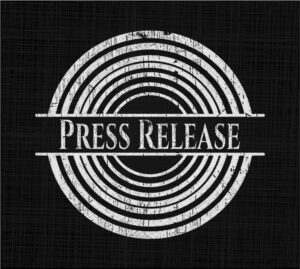 When you write a press release, you’re going to need to come up with a headline for it. If possible, you should try to include the words “show,” “reveal,” and/or “allow” in it.
When you write a press release, you’re going to need to come up with a headline for it. If possible, you should try to include the words “show,” “reveal,” and/or “allow” in it.
According to a recent study, using these words in the headline of a press release will get more eyes on it than other words will. Words like “announce” and even “launch,” meanwhile, tend to turn people off from reading press releases.
As you write a press release, you should also aim to incorporate other important press release components into it outside of just a catchy headline. These press release elements will help to make it as effective as it can be.
If you read through almost any great press release example, you’ll spot many of these fundamental elements right away. Check them out below and try not to leave any of them out the next time you write a press release.
Dateline
If your plan is to write a press release and send it out to all those you want to receive it yourself, you might not think that including a dateline is necessary. The people who get your press release will know that it’s filled with the most current content, right?
Maybe. But even still, you should still stick a dateline into the beginning of a press release. It’ll let people know that you just put this press release together and started sending it out.
It’ll also come in handy if you plan to utilize a press release distribution company to send out a press release for you. It’ll guarantee that everyone who reads your press release knows when it was written.
Introduction
In a perfect world, everyone who gets your press release is going to read every single word of it. But unfortunately, this isn’t usually the way that things work out.
Most of the people who receive press releases will only read through the first one or two paragraphs of it. It’s what makes it so important for you to include a strong introduction at the start of it.
The introduction for your press release should provide people with the bulk of the information they’ll need to know when it comes to why you’re sending a press release out in the first place. It should also entice them to continue reading if they’re interested in whatever product, service, event, etc. you’re looking to promote with your press release.
Body
Even though you might not be able to convince everyone to read beyond the introduction of a press release, you should still strive to make the body of it as interesting as you can. It should be several paragraphs long, and it should include as much information about a product, service, event, etc. as possible.
Furthermore, you should look to beef up the body of a press release with things like statistics and quotes. You might even want to sneak one or two charts into the mix to let people know about whatever it is that you’re seeking to promote.
Ideally, you don’t want anyone to have a long list of questions about a product, service, event, etc. once they’re done reading the press release you wrote. Any and all information they might need should be contained somewhere in the body of your press release.
Boilerplate Content
Some of the people who read through a press release that you wrote might already be familiar with the company you’re writing it for. But you shouldn’t just assume that this will be the case when you write a press release.
It would be a much better idea to include boilerplate content in every press release that you send out. You can keep this boilerplate content the same for every press release and stick it somewhere near the end of it or even all the way at the bottom.
This boilerplate content should include information about how long a company has been around, what a company does, and what kind of an impact a company has made over time. It’ll let people learn about a company without having to go out and find information on their own.
Call to Action
The purpose of taking the time to write a press release is to motivate people to do something. You want them to contact you for more information about a product you’re going to start selling soon or encourage them to visit your website to get additional info on the service you’re going to be providing in the near future.
With this in mind, you should always end a press release with a call to action. A call to action will be exactly what it sounds like. It should use words that let people know what you want them to do next.
Some examples of calls to action are:
- “Get in touch with us to obtain a sample product so that you can see how it works!”
- “Stop by our store to check out our new services for yourself!”
- “Take a trip to our website to find a schedule of our upcoming events!”
The stronger a call to action is, the better the chances of someone reading it and actually taking action. For this reason, you should carefully craft a call to action that’s going to produce results.
Contact Information
Some people are going to make it to the end of a press release that you’ve written and want to get in contact with you to discuss a company’s new product, service, event, etc. This will be especially true if you’ve used your call to action to ask them to reach out to you.
Your goal should be to make it as simple as possible for other people to contact you if they’d like to do it. You should provide them with as many possible ways to find you as they can.
Your phone number and email address should both appear on a press release. But you might also want to include things like a company’s website, your social media handles, and more. It’ll provide people with everything they’ll need to contact you should they choose to do it.
Photo
You might be able to write a press release and send it out without including a photo on it. Putting a photo on a press release might not always be necessary. If anything, you might want to just include a quick note about how photos are available of a new product, service, event, etc. upon request.
But if you have enough space on a press release, including a photo somewhere on it might not be the worst idea in the world. It’ll provide people with one more thing to look at when they’re going through your press release and break up some of the text in it.
A well-placed photo can also help provide people with even more information about whatever it is you’re promoting. It’s why you might want to see if there are any photos that you can include.
Just be sure to include a high-quality photo on a press release if you decide to include one at all. You want a photo to help strengthen your press release, not take away from it and make it look low-budget.
Logo
One final way to put your stamp on a press release as you write it is by including the logo for a company on it. This logo will let it be known where the press release is coming from before people even read a single word on it.
Putting a logo on a press release when you write it will also give you an opportunity to build brand recognition. People will begin to get to know your company’s branding better every time they receive a press release from you with a company’s logo on it.
Like photos, it might not always be necessary to include a logo on a press release if space is at a premium. But if you can make room for a logo, it could pay off in a big way.
Remember These Elements as You Write a Press Release
If you don’t follow some basic press release guidelines, you might be left with a press release that isn’t as effective as it could and should be. You should include each of the elements listed here when you sit down to write a press release.
You should also commit to taking the right steps when you start distributing a press release. eReleases can help you with this part of the process by setting you up with the press release distribution services you need.
Contact us now to discover how we can help you.
